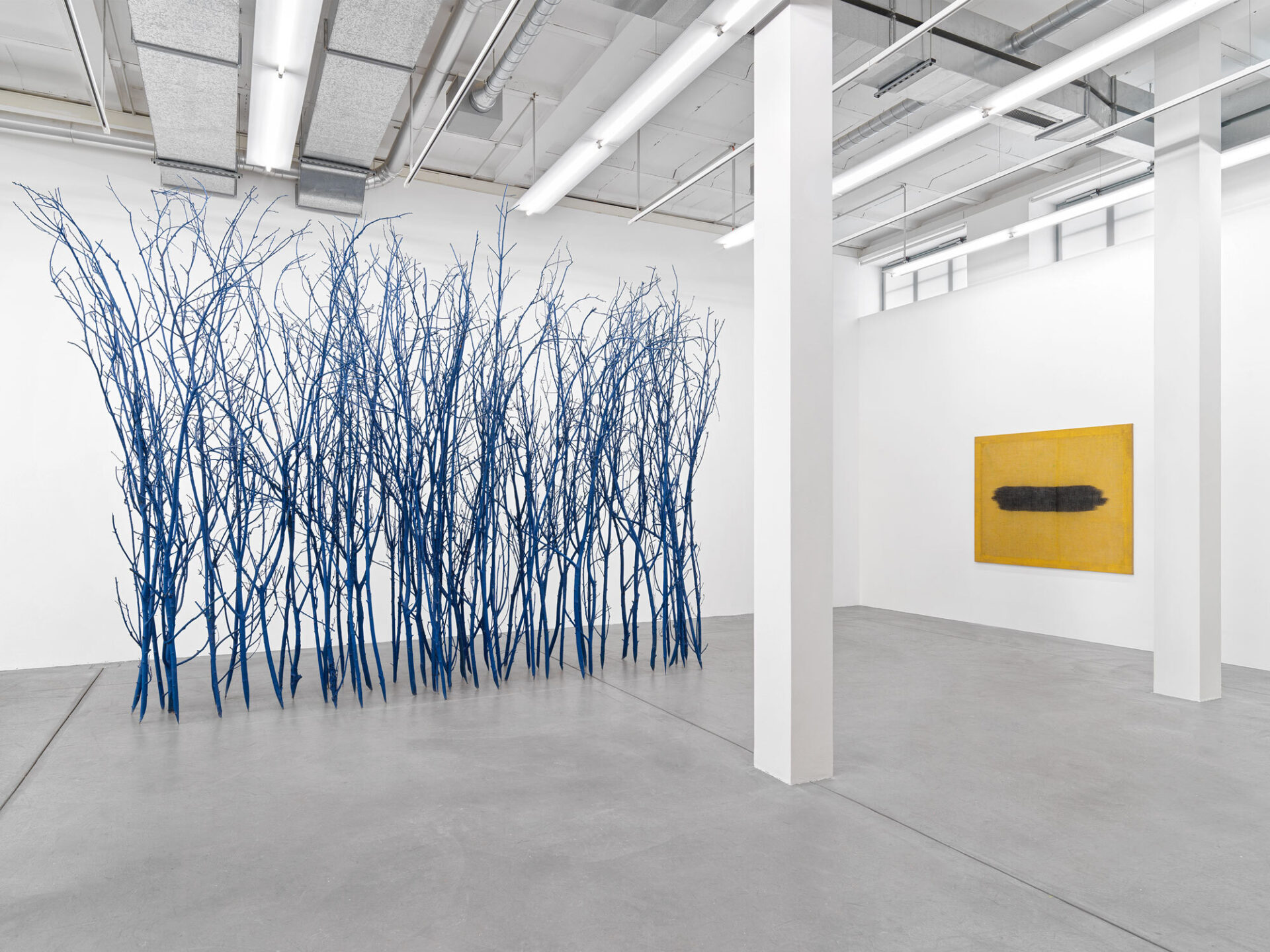
Salvatore Emblema
Sub-limine
This summer, Museum Haus Konstruktiv is holding Switzerland’s first retrospective exhibition dedicated to Italian artist Salvatore Emblema (1929–2006, Terzigno). Paintings, sculptural objects and installations from his estate will be on display on two floors, offering insight into his various creative periods from 1959 to the 2000s.
1.6.–10.9.2023
curated by Sabine Schaschl
Far away from northern Italy’s post-war avant-garde, Neapolitan artist Salvatore Emblema produced an independent and archaic-looking oeuvre that cannot be attributed to any particular style, but nevertheless shows clear links to the art movements of his time.
After abandoning his art studies at Accademia di Belle Arti di Napoli and traveling in Europe, Emblema lived in Rome at the start of the 1950s. There, he assisted on Cinecittà film sets and was able to realize his first solo exhibition in 1954. During those years, Emblema also made the acquaintance of Jean Dubuffet, who made paintings using earth, gravel and so forth. For Emblema, who had witnessed the last major eruption of Mount Vesuvius, such use of natural materials must have been a revelation. In 1944, his hometown of Terzigno was smothered by volcanic ash. Large parts of the municipality were destroyed. This existential experience made Emblema aware of the connection between landscape and identity on one hand, and of the geological conditions of his immediate surroundings on the other. It would later influence his choice of materials in his painting.

This retrospective exhibition, created in close cooperation with Archivio Salvatore Emblema in Naples, begins on the 5th floor, next to Fritz Glarner’s Rockefeller Dining Room (1964/65). The two earliest Emblema pieces here, both from 1959, already exhibit key features of his whole subsequent oeuvre. It was initially financial constraints that prompted him to paint on jute, but he was soon fascinated by the uneven translucent structure of this material. He did not apply chemical paints to it, but earth pigments, specially prepared from volcanic ash, petrified lava and oxidized metals.
In 1957, Emblema had the opportunity to go to New York for a year. There, he encountered Mark Rothko and his color-field paintings. This would shape Emblema’s work in the years that followed, as would his visit to the Metropolitan Museum, where he was overwhelmed by the vibrancy of Roman frescoes. Later, he would say that it was only from this distance that he recognized the qualities and possibilities of his origins. After his return to Terzigno, Emblema used the Pompeian technique of mixing ground earth with a transparent organic binder. He also explored what was literally the basis of his origins by applying untreated volcanic rock to large-format panels.

The opening-up of the image is a phenomenon frequently observed in Italian post-war art, for instance in the work of Lucio Fontana and his Tagli or in Agostino Bonalumi’s relief-like picture surfaces. In 1968/69, Emblema produced a group of works that set him on his way toward overcoming the boundaries of the image: In these comparatively small-format paintings, which have no surrounding frames and are merely mounted on stretcher frames, the borders are mostly monochrome and geometrically emphasized to such an extent that the limitations of the canvas become a significant visual element. Here, he makes use of the coarsely woven structure of the jute surface, the slight transparency of which allows the stretcher frame to show through.
Art historian Giulio Carlo Argan drew Emblema’s attention to the unexplored space behind the painting and encouraged him to probe it. At the end of 1969, Emblema reported that he had experienced an ‘egg of Columbus’ moment by extracting individual woven threads from the jute fabric. Using this subtractive manipulation, which makes it possible to see through the canvas to the wall, Emblema realized his de tessute, one of his most important groups of works. While the materiality of jute had initially served as an image carrier out of necessity, it was now proving to be a means of exploring boundaries and of shaping the internal structure of images. This subtle artistic device and the outwitting of boundaries, as encapsulated in the term sub-limine, are central to Emblema’s work and provide the title of this exhibition. From then on, he would interrelate and analyze light, space, and transparency as three components. In the 1970s, in parallel to more in-depth work on de-tessute, Emblema continued to intervene in the space with installations and three-dimensional structures. In this Zurich exhibition, those artworks are presented on the 4th floor.

The works from the series Porte (1974), which can be placed in different arrangements and with varying numbers of elements in a space, are made of the same materials as the paintings: jute canvas, dyed earth, and wood. They exemplarily extend the discussion of boundaries and transitions. At what point does a painting become a sculpture and how does the space relate to it? How are light and transparency dealt with if, according to Emblema, every wall becomes a landscape as soon as light falls on it?
The titles of works like Ricerca sul paesaggio (1972–1976) and Altro spazio (1972) underline Emblema’s interest in terrain. For his grid structures, which can also be installed outdoors and involve intensive observation of the surroundings, Emblema used the colors blue and red, which absorb light particularly well, in addition to white, which seems to dissolve in it. The landscape is thus embedded in Emblema’s work. Although it is not the focus of his oeuvre, it consistently aided his exploration of transparency and of the spatial qualities that this entails.

The most recent works in the exhibition are to be found on the 5th floor. In 2004, Emblema again addressed the theme of opening up the image and manipulating the canvas: this time bringing movement into the picture by knotting the fabric.
We thank Museo Emblema – Salvatore Emblema Estate, which contributed significantly to the realization of this exhibition.
Museum Haus Konstruktiv is supported by its patrons, members and
